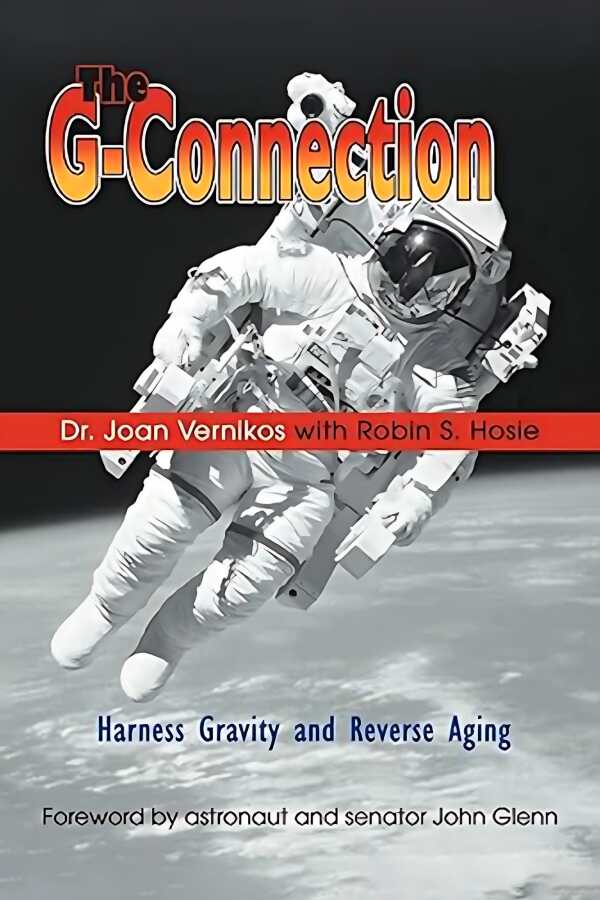The G-Connection
Harness Gravity and Reduce Aging
Backed by science gathered from NASA, the health text The G-Connection combines detailed analyses with practical suggestions for harnessing gravity to improve one’s well-being.
Applying lessons from human space travel to the study of aging, former NASA scientist Joan Vernikos’s health book The G-Connection develops a novel theory of old age in which gravity, rather than time, has the greatest influence on physical decline.
The book notes that, upon returning from even short missions in space, young, healthy astronauts exhibit conditions associated with premature aging, including extreme bone density loss, irregular blood pressure, and decreased balance and coordination. Drawing on decades of experimentation and research into this strange phenomenon, The G-Connection details how aging can be understood as the diminished interaction between the body and gravity rather than as an absolute measure of time spent on Earth. Arguing that inactivity and sedentary lifestyles—hallmarks of adulthood in developed societies—undermine a healthy relationship between the body and gravity, it proposes practical lifestyle interventions to increase longevity and well-being. Chapters address topics including depression, psychology, and bone, muscle, and organ strength, combining approachable summaries of relevant theories with practical suggestions for taking advantage of gravity in everyday life.
The prose is direct and persuasive, and Vernikos’s expertise as the former NASA director of life sciences and a pioneer researcher on the body-gravity connection is clear throughout the book. Her descriptions of how and why bed rest, even when paired with exercise, exacerbates bone loss and slows physical recovery are complemented by the data of earthbound experiments in which healthy test subjects were bedridden for up to eighty-four days to mimic the experience of microgravity. In delving into the data collected from these experiments, the book is candid, describing the varying degrees of correlation that were established. For instance, connections between gravity, depression, and sleep are speculated on, while the relationship to bone health in the lower body is asserted with authority. Simple recommendations such as to stand up during long periods of seated work bring the book’s ideas down to earth.
In the book’s later chapters, the narrow focus on gravity drops away in favor of more general lifestyle advice on nutrition and alternative medicines. These ideas are delivered with a tone of curiosity rather than with dogmatic insistence, but they drift far from the text’s central thesis about gravity and are sometimes undersupported, as with the assertion that exposure to bright light is a potential remedy for depression. Elsewhere, anecdotal evidence, as of the relationship between sleep cycles and the moon’s fluctuating gravitational pull, proves less than compelling.
A fresh take on the causes and effects of age-associated physical deterioration, the insightful health text The G-Connection combines detailed analyses with practical suggestions for harnessing gravity to improve one’s well-being.
Reviewed by
Willem Marx
Disclosure: This article is not an endorsement, but a review. The publisher of this book provided free copies of the book and paid a small fee to have their book reviewed by a professional reviewer. Foreword Reviews and Clarion Reviews make no guarantee that the publisher will receive a positive review. Foreword Magazine, Inc. is disclosing this in accordance with the Federal Trade Commission’s 16 CFR, Part 255.

